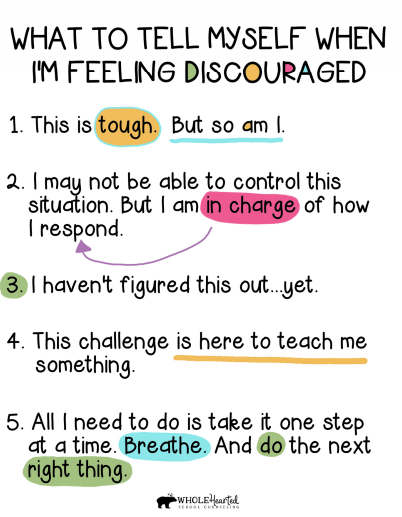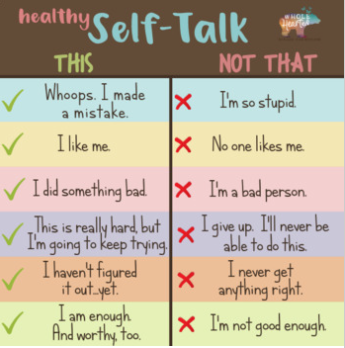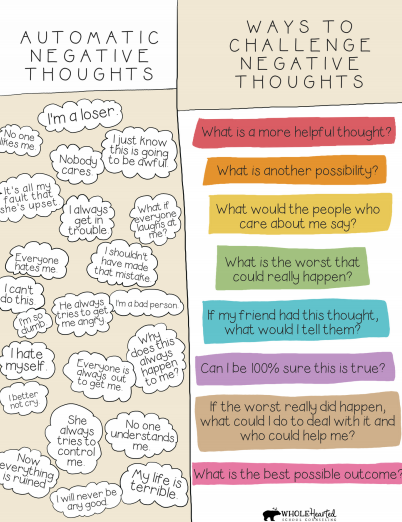Let’s face it, we all suffer from low self esteem from time to time. It is important for students to understand the difference between when they are experiencing positive self esteem and when they are sinking into low self esteem behaviour or attitudes.
-
Start by creating a t-chart with positive self image on one side and negative on the other.
-
Brainstorm behaviours or characteristics of each.
-
Next discuss things that they do when they are feeling low that help them to feel better. Have students brainstorm their own list of healthy ways to promote positive self image. (Self-Care Bingo is a good spin off activity)
Some possible journal entries:
-
Where do your positive and negative beliefs about self come from?
-
How accurate are they?
-
Do you replay more positive or negative messages about yourself in your head?
-
What are things you do to build your self esteem?
-
Have you ever had a positive influence on someone else’s self esteem? Explain how.
Automatic Thoughts:
Our thoughts control how we feel about ourselves and the world around us. Positive thoughts lead us to feeling good and negative thoughts lead us down dark paths that can result in self sabotage, upset, worry and anxiety.
Sometimes our thoughts happen so fast that we don’t even notice we have them. Some of our thinking stems from patterns created over a lifetime of experiences and input. Oftentimes sadly, our automatic thoughts are negative and can even be irrational. Identifying these negative automatic thoughts and replacing them with new rational thoughts can improve our mood and well-being.
Ex., A trigger may be getting a low mark o a Math test.
Automatic thought: “I am so stupid. I am not good at Math and never will be.”
New thought: “I tried my best. It’s only one grade. I will practice more next time.”
Strategies to help defeat Automatic Negative Thoughts:
-
Watch the “Automatic Thoughts” video
-
Brainstorm with students different examples for some of the categories of negative automatic thoughts that occur (i.e., catastrophizing, overgeneralizing, assuming or mindreading, fairy tale fantasizing…)
- Learn the “Triple R Strategy” (Record, Rationalize, and Replace):
- Record upsetting events
-
Rationalize by addressing each irrational thought
-
Replace with a rational thought
-
Practice the Triple R Strategy in your journal with a negative automatic thought that you have or have had.





